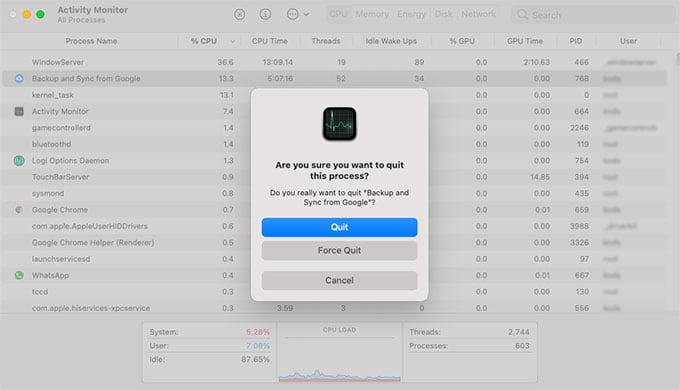
- #Mac spinning wheel of death logs how to
- #Mac spinning wheel of death logs mac os x
- #Mac spinning wheel of death logs pro
- #Mac spinning wheel of death logs code
#Mac spinning wheel of death logs how to
How to fix this Mac grey screen of death? Please Help. I have truly tried every single way to restart and nothing is working. Now I have the feared grey screen, and no boot modes have fixed this. Then I then turned it off and attempted to turn it on again. This morning I opened up the lid, typed in my password, but received a beach ball loading sign.
#Mac spinning wheel of death logs pro
User Query: I have a MacBook Pro with 1TB of storage, and 16GB of memory. But once your Mac gets stuck on the grey screen, you can’t skip the screen to move forward to the login screen. Moreover, Mac doesn’t even show an error message stating the real cause behind the gray screen.īut you may find the Apple logo, a spinning globe, a folder with a question mark, or a prohibitory sign along with the gray screen. It can be a very frustrating situation when your iMac, Mac mini, MacBook Air, or Pro is stuck on a plain gray screen. In this article, you’ll find certain troubleshooting methods to fix the grey screen appearing on Mac. Which shouldn't come as a shock to anyone.Summary: Mac grey screen of death may be frustrating and can occur often when you try to login to macOS. Of course, this doesn't tell you why certain programs do it all the time - it just says that the program's authors need to spend more time multithreading and Apple needs to spend more time optimizing. Also, if the operating system wants to tell your program that the user has performed some action like a keypress and your program doesn't respond within a certain amount of time, you get the spinner.
#Mac spinning wheel of death logs mac os x
Getting back to the original question, Mac OS X is set up so that if you ask the operating system to do something and it doesn't finish within a certain amount of time, you get the spinning cursor. One accomplishes this by using Application Programming Interfaces (APIs - these are the Carbon and Cocoa things you may have heard of).įor example, if one wants to create a new window, one asks the operating system to create a new window with this title, at that location on the screen, etc. Instead, one writes the "logic" of the program and lets the operating system (Mac OS X) do the rest.
#Mac spinning wheel of death logs code
When one writes a mac program, one doesn't write all of the code that handles displaying windows, fetching data from the internet, drawing menus, etc. I don't know why any one program in particular is doing this, but I'm pretty sure that I know "why" it happens. You can kill the Finder and keep others apps running - the Finder itself is, actually, just another application running. Now, the Finder has the same functionality, but other programs are not affected as much as they used to be by the Finder. In OS 9, if you didn't have a Finder, your computer was basically useless since that controlled your desktop, etc.

The Finder no longer is tied into the other applications running anymore. Some program is hogging the CPU, which it's not supposed to do under OS X. When i see the spinning wheel, the CPU monitor is usually maxing out.

I've got my CPU monitor bar in my menubar horizontally so I can keep an eye on it all the time.

Keep your terminal open with the "top -u" program running, and when the wheel appears, check the "top" program to see what program is using a very high amount of CPU %. Again, if it's only doing it for 10-15 seconds at a time, then the program isn't crashing - just hanging for some reason. I don't know anyone who knows anything about 10.2 other than those leaked screen shots making their way around the 'net from last year.Īt any rate, you'll probably find that IE exhibits the "spinning wheel of death" more frequently than other programs. seems like too many people take rumor for fact these days.


 0 kommentar(er)
0 kommentar(er)
